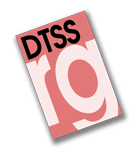Nuevas tecnologías y nuevas cuestiones a resolver. Comentario a la STC 281/2005, de 7 de noviembre. (RI §406312)

New technologies and new questions to resolve: some reflections concerning the STC 281/2005 of november 7th, 2005 -
Ana María Badiola Sánchez
La introducción de las nuevas tecnologías en el contexto en que se desenvuelve la sociedad actual ha traído consigo la implantación de las mismas en el ámbito laboral, como no puede ser de otra manera. Los trabajadores de hoy en día, en general, disponen de útiles herramientas que hace escasos años eran impensables y que han modernizado y facilitado sensiblemente el acceso a medios de información y de comunicación. Con todo, la novedad, que ya no es tanta, exige la adaptación a los medios por parte de los sujetos de la relación contractual de trabajo y la sensibilización por parte de los negociadores en la consideración de estas cuestiones en el ámbito de la negociación colectiva. También es importante conocer qué se considerará un uso adecuado y los contornos que definen la extralimitación en el uso de esta clase de medios.
I. EL PAPEL DE LAS NUEVAS TECNOLOGÍAS EN EL ENTORNO DEL SISTEMA PRODUCTIVO.- II. NEGOCIACIÓN COLECTIVA Y NUEVAS TECNOLOGÍAS.- III. LA STC. 281/2005, DE 7 DE NOVIEMBRE: LA UTILIZACIÓN DEL CORREO ELECTRÓNICO CON FINES SINDICALES.
The introduction of new technologies in the context in which present-day society is being developed has entailed the implantation of them in the labour scope, since it cannot be otherwise. Nowadays, workers have generally useful tools that few years ago were unthinkable and that have sensitively modernized and facilitated the access to information and communication media. In spite of everything, the innovation, which is already not so much, requires the adaptation to the media on the part of work contractual relationship individuals and the sensitization of the negotiators to bear in mind these issues in the collective bargaining sphere. Also, it is important to know what is considered to be a suitable use and moreover which are the limits that define the abuse in the utilization of this resources.
I. THE ROLE OF THE NEW TECHNOLOGIES IN THE PRODUCTIVE SYSTEM FRAMEWORK.- II. COLLECTIVE BARGAINING AND NEW TECHNOLOGIES.- III. THE STC. 281/2005, OF NOVEMBER 7TH: THE USE OF ELECTRONIC MAIL FOR TRADE UNION OBJECTIVES.
